Content
Food from private farms is the best option for people who care about their diet. Homemade eggs and meat are much tastier, and, most importantly, healthier than store-bought ones. Nowadays, raising animals has become more accessible, because to keep birds it is not necessary to build expensive wooden or stone chicken coops. An excellent alternative to traditional flocks would be a polycarbonate chicken coop. In addition, the construction of a building made of polycarbonate will cost less than wood or stone.
Many owners of private farms have covered greenhouses or polycarbonate greenhouses. The experience of farmers and breeders suggests that such structures are excellent for keeping poultry.
Advantages of polycarbonate
The basis of polycarbonate is polymer compounds, thanks to which the material is durable and frost-resistant. Polycarbonate has a wide range of colors: from translucent to rich shades. Polycarbonate is available in the form of flexible sheets of different thicknesses.
Despite their small size, polycarbonate chicken coops perfectly protect poultry from bad weather and predators. However, keeping chickens in the winter season has its own characteristics. The winter chicken coop must be equipped with:
- ventilation;
- lighting fixtures;
- warm floor.
If the chicken coop is built from a polycarbonate greenhouse, it must be cleaned first. The interior space of the future chicken coop is cleared of debris, weed and tools.
Setting up a chicken coop
The next stage of decorating the chicken coop is the construction of poles and perches (see photo below).
In addition to standard “furniture,” chickens need feeders and drinkers; they are installed away from the exit. After assembling the poultry house perch, a heated floor is installed. Sawdust, straw or hay are optimal for it. The last two materials are preferable, as they do not harm the chickens' digestive system.
Comfortable temperature for chickens is +10 degrees. For laying hens, a temperature range of 15 to 25 degrees is required. Temperatures below zero in a polycarbonate chicken coop are detrimental to poultry. When it gets colder, additional heating sources are installed in the chicken coop, for example, heat guns, convectors or stoves.
In a small space, chickens create an optimal microclimate for them, which improves egg production. Another way to increase the number of eggs your bird produces is to build a run area next to or inside the chicken coop.
A very important component in a chicken's home is light. In summer and spring there is enough sun, but in winter the bird needs an additional source of lighting in a polycarbonate structure. To do this, energy-saving lamps are installed in a polycarbonate chicken coop. They must work 12-14 hours a day. The solar cycle in winter is much shorter, so the lighting in the chicken coop is turned on both in the morning and in the evening.
Insulating a chicken coop in regions with mild and temperate climates
The floor of the chicken coop is the most vulnerable place to drafts. Therefore, first of all in a flock insulate foundation. If the building stands on a pile or columnar foundation, it is fenced with board shields. The most reliable is a multilayer type of insulation. To do this, knock down a two-layer fence made of boards, and lay foam plastic or other moisture-resistant insulation between them.
To protect the strip base of the chicken coop, use the following method:
- a trench is made along the perimeter of the foundation;
- foam wrapped in cellophane is placed inside the ditches;
- the insulation is covered with a waterproofing material, for example, roofing felt;
- the cavities are filled with soil level with the chicken coop.
The inside of the polycarbonate chicken coop is covered with film and covered with earth. This method of protection is considered very reliable. If winters in your area are very harsh, use additional heating sources.
Insulation of a greenhouse-chicken coop in cold regions
At low temperatures, external thermal insulation will not be enough. Therefore, water or electric heating is carried out in a polycarbonate chicken coop for the winter.
A popular option for heating a flock is heated floors. To do this, the soil of the chicken coop is leveled and 10 mm of sand is poured onto the bottom. A film is laid on top and placed on non-electric heating cables with a thermostat. To regulate the temperature, the system is equipped with a relay. Another roll of protective film is laid over the cables and a layer of sand is poured. Chickens spend most of their time on the floor or on a perch, so a heated floor is optimal for heating a chicken coop.
The only disadvantage of the cable system is the high cost. However, the investment will be worth it with regular egg production.If an electric heating system seems costly to you, take a closer look at the water design. It will require communications to the chicken coop. But if your site has a water supply, this heating method will be much cheaper.
DIY construction
To build a polycarbonate poultry house with your own hands, you will need the following tools and materials:
- drill and fasteners;
- hammer;
- cutter;
- jigsaw;
- thick wire.
All tools can be found in any private household without any problems. The construction of the building begins from the frame. It is optimal to use metal for this. For convenience, first assemble a wire template. The size of the sides of the frame must match the intended parameters of the poultry house. A square is made from wire, with which the polycarbonate will be attached. Similar templates are made for walls and ceilings (an example of a device is shown in the photo).
When all the templates are ready, you need to weld the joints of the sides of the future chicken coop. Then they start cutting the polycarbonate. The finished sheets are inserted into a wire frame and tied with thick threads. When all the sheets are tied to the wire, they are fastened together and installed on the ground or a previously prepared foundation.
A greenhouse combined with a chicken coop will be an excellent home for poultry. In such a building, birds will be able to overwinter for more than one season. And with high-quality insulation of the chicken coop and arrangement of the roost, you can increase the number of eggs in laying hens.
When setting up a poultry house for chickens and other poultry, it is important to remember all the nuances. Chickens are very sensitive to climate, so they require comfortable conditions.
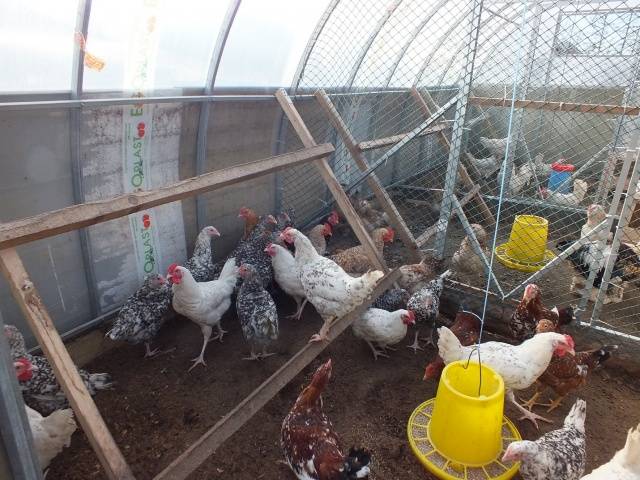
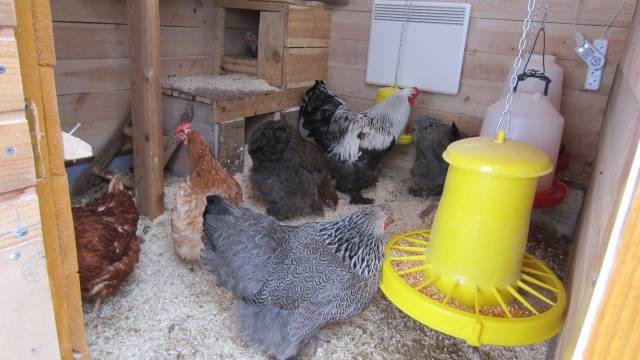
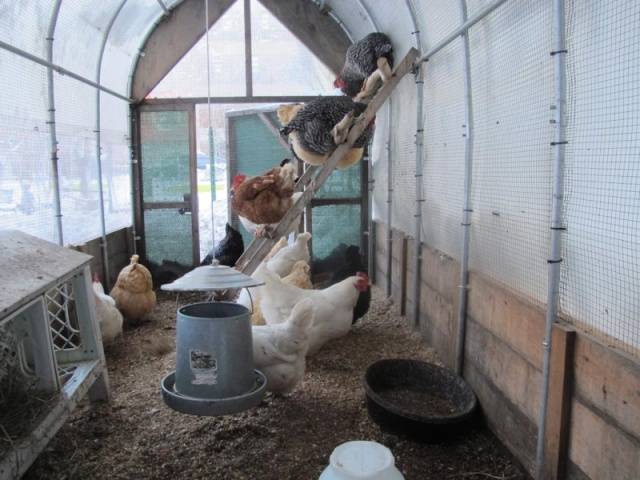
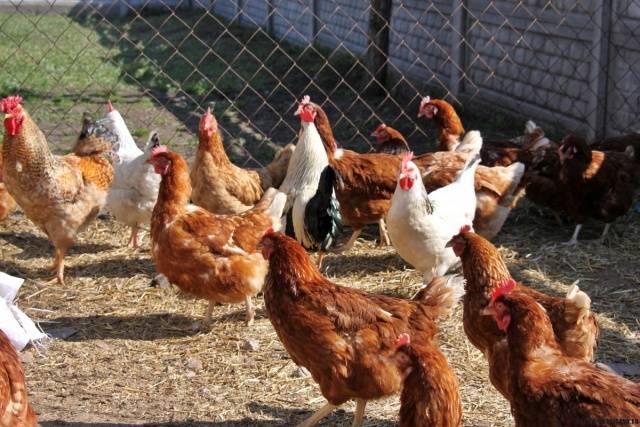
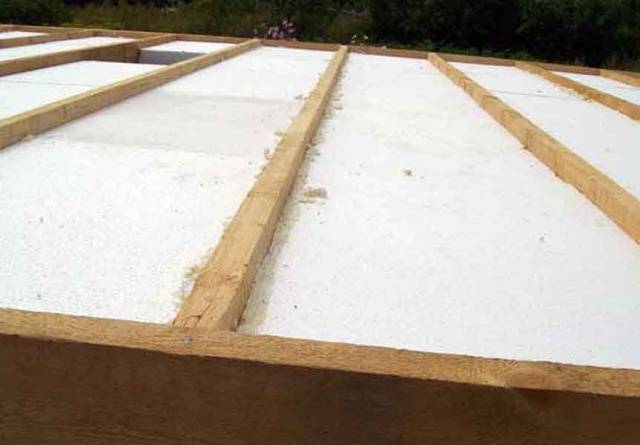
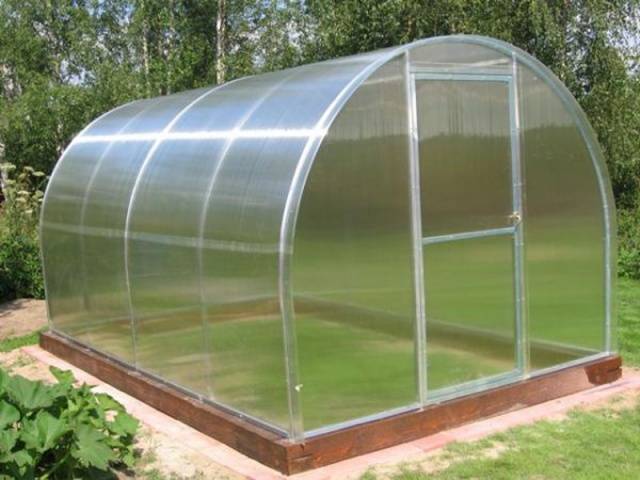
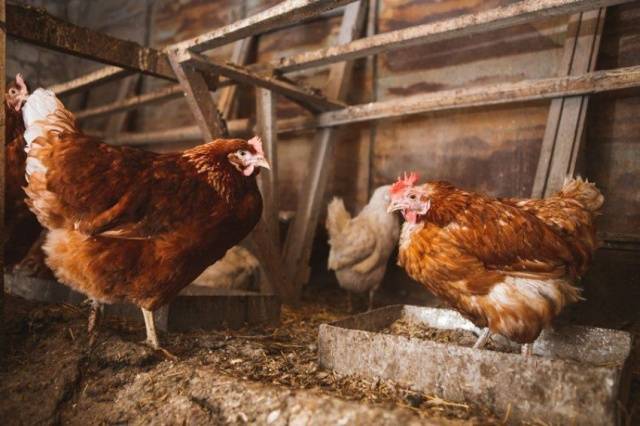
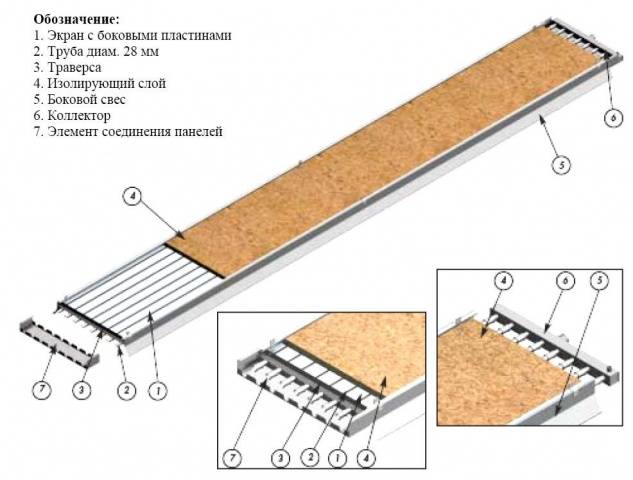
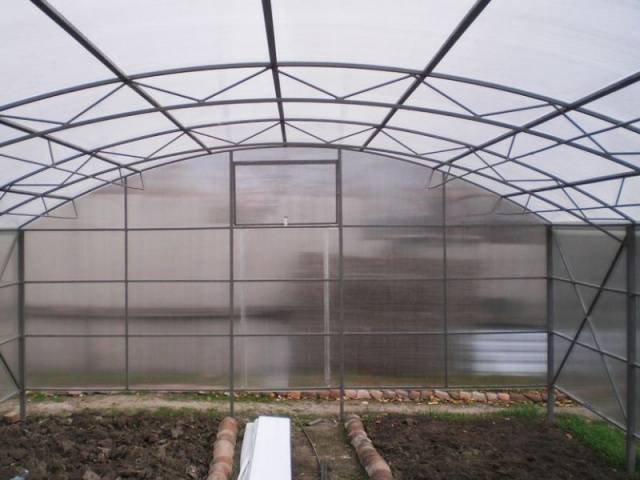
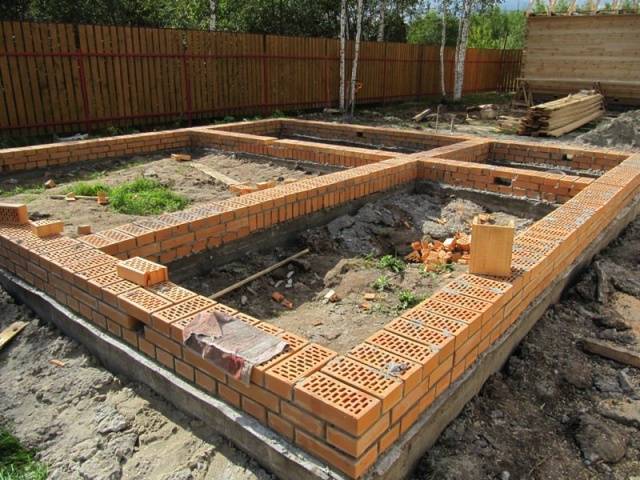
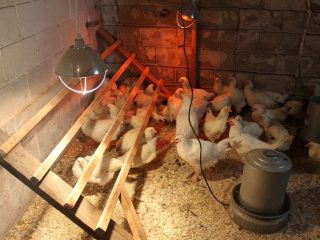

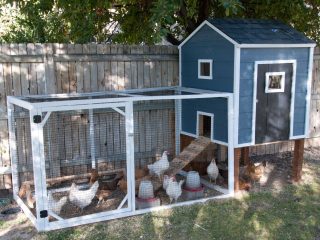
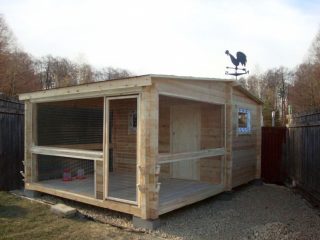
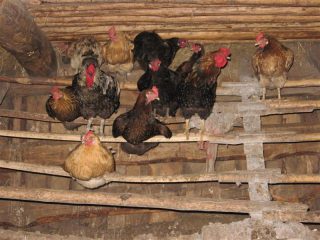
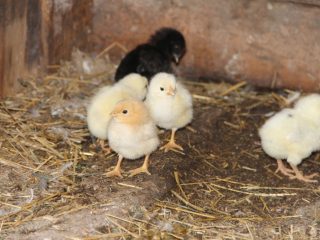



I want to place chickens in a polycarbonate greenhouse. But there is always condensation in the greenhouse. And during the day it is very hot there. Or will open doors for ventilation be enough? But you have to leave for the city for two days - if you close the doors, will two open windows be enough?
Hello. Even heat is not as harmful to chickens as high air humidity. In addition, in conditions of high heat and humidity, black mold, which causes aspergillosis in birds, multiplies very well.
In dry air, chickens can easily tolerate heat up to 30 degrees if they have shelter from the sun. At air temperatures above 30°C, broiler crosses begin to die. Their temperature range is 21-30 degrees. Laying hens are more hardy, but reduce egg production.
High humidity is destructive at any temperature. Two vents at the top will not be enough for birds, since normal ventilation must work, when cold air enters the room through the lower opening, and hot air exits through the upper. In your case, there will only be an outlet for hot air.
Open doors and windows would be enough for ventilation, if possible. One open door at the end and a window at the opposite end of the greenhouse would be enough for the chickens if they had the opportunity to go out into the enclosure with a canopy.
The best option for chickens would be an indoor enclosure with shelter from wind, rain and sun. As a last resort, you can attach the enclosure to the greenhouse.But you shouldn’t leave your chickens indoors in a hot, humid place for several days.